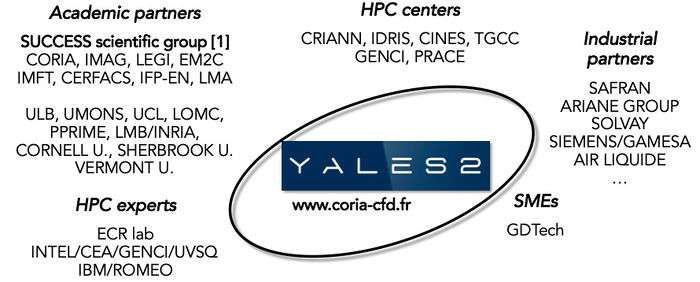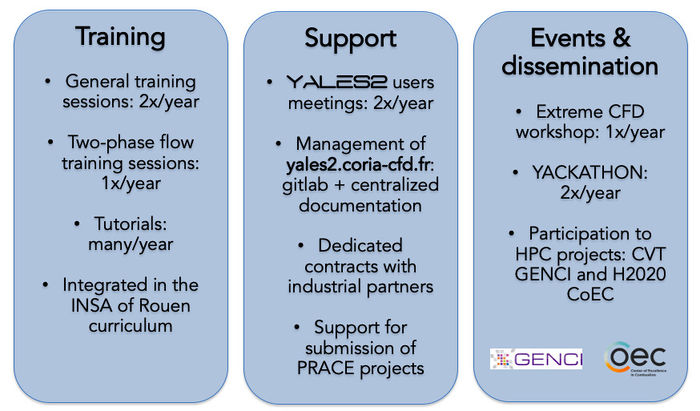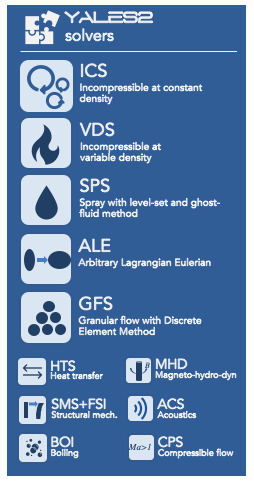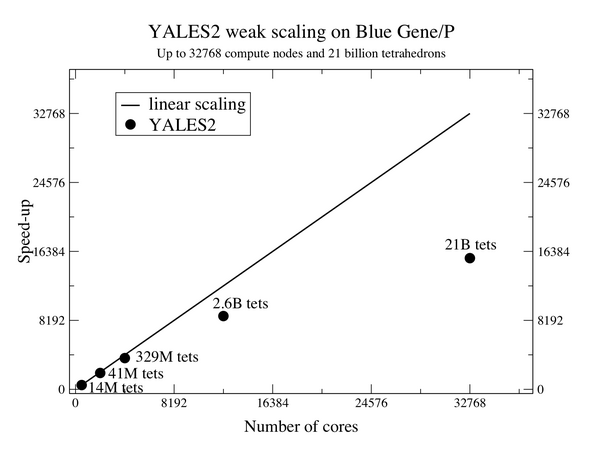YALES2 public page
(→YALES2 Library and solvers) |
|||
| Line 39: | Line 39: | ||
[[File:Solvers.jpg | center | thumb | 700px | YALES2 solvers]] | [[File:Solvers.jpg | center | thumb | 700px | YALES2 solvers]] | ||
| − | |||
| − | |||
| − | |||
| − | |||
== Gallery == | == Gallery == | ||
Revision as of 22:05, 20 July 2023
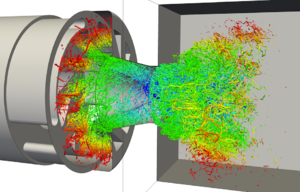
Contents
Motivation
YALES2 aims at the solving of two-phase combustion from primary atomization to pollutant prediction on massive complex meshes. It is able to handle efficiently unstructured meshes with several billions of elements, thus enabling the Direct Numerical Simulation of laboratory and semi-industrial configurations.
YALES2 was developed from 2007 to 2010 by V. Moureau and is maintained since 2011 by V. Moureau and G. Lartigue at CORIA and several other people in research laboratories.
More information may be found in the following presentation: YALES2 presentation
Community
There is today more than 500 researchers/engineers who were trained by the CORIA since 2009. The community regroup academic partners, HPC centers, industrial partners, HPC expert, SMEs and more.
Commitments
The YALES2 team is committed to supporting code users through training, meetings, projects or events.
Here an example of event you can participate to:
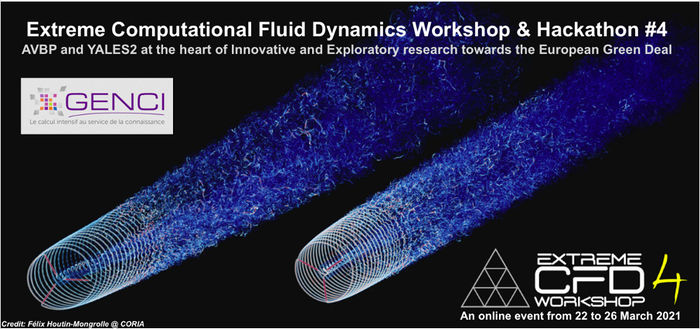
YALES2 Library and solvers
The numerical library YALES2LIB consists of all the numerical methods required to develop solvers:
We have plenty of solvers today, here are the principals:
Gallery
Some computation examples are given in the gallery and on the Youtube video channel [1]
Performances
Thanks to highly efficient linear solvers, the speed-up of YALES2 is almost linear for meshes with several billion elements. These measures up to 21 billion elements were performed at IDRIS in France and at the Juelich Supercomputing Center in Germany.
